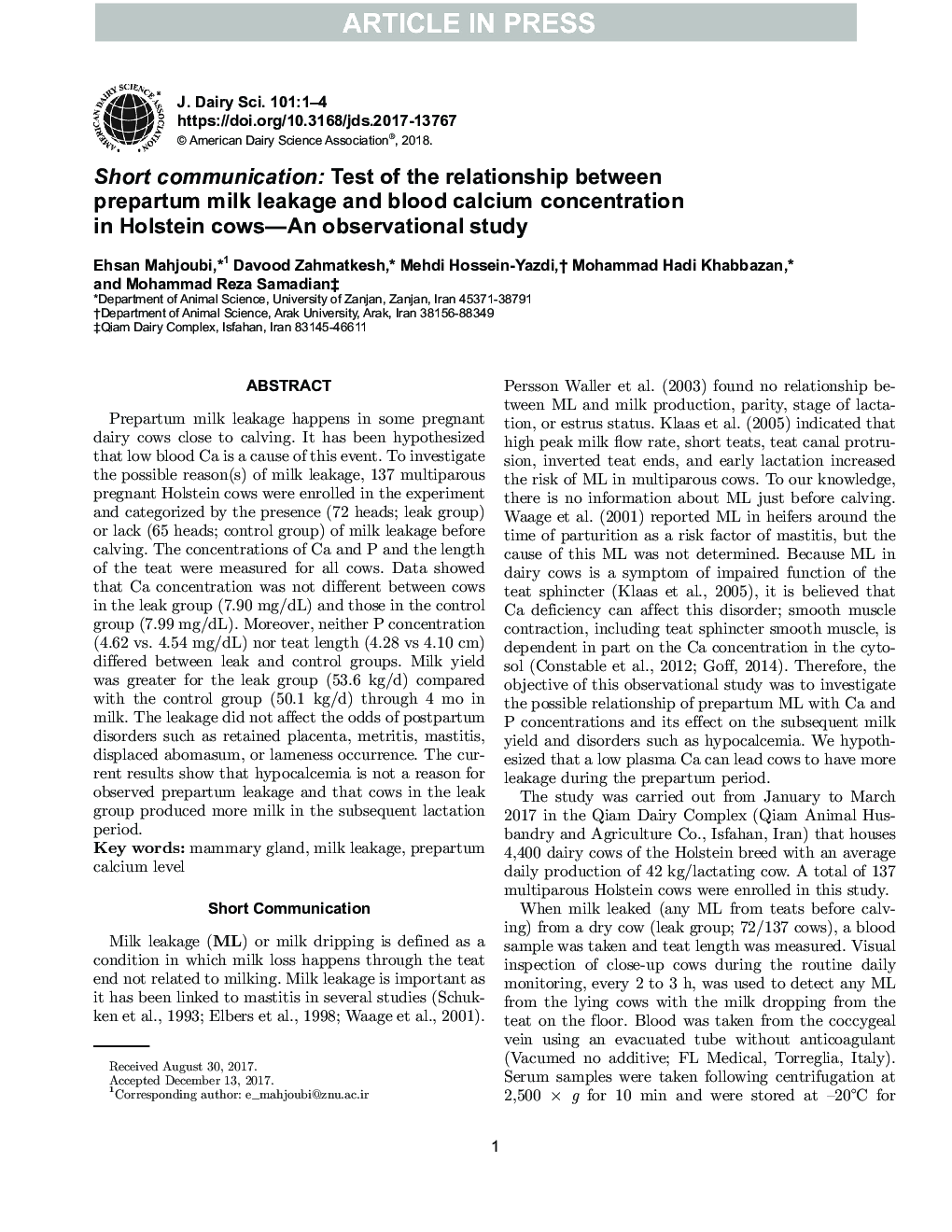| Article ID | Journal | Published Year | Pages | File Type |
|---|---|---|---|---|
| 8501514 | Journal of Dairy Science | 2018 | 4 Pages |
Abstract
Prepartum milk leakage happens in some pregnant dairy cows close to calving. It has been hypothesized that low blood Ca is a cause of this event. To investigate the possible reason(s) of milk leakage, 137 multiparous pregnant Holstein cows were enrolled in the experiment and categorized by the presence (72 cows; leak group) or lack (65 cows; control group) of milk leakage before calving. The concentrations of Ca and P and the length of the teat were measured for all cows. Data showed that Ca concentration was not different between cows in the leak group (7.90 mg/dL) and those in the control group (7.99 mg/dL). Moreover, neither P concentration (4.62 vs. 4.54 mg/dL) nor teat length (4.28 vs 4.10 cm) differed between leak and control groups. Milk yield was greater for the leak group (53.6 kg/d) compared with the control group (50.1 kg/d) through 4 mo in milk. The leakage did not affect the odds of postpartum disorders such as retained placenta, metritis, mastitis, displaced abomasum, or lameness occurrence. The current results show that hypocalcemia is not a reason for observed prepartum leakage and that cows in the leak group produced more milk in the subsequent lactation period.
Keywords
Related Topics
Life Sciences
Agricultural and Biological Sciences
Animal Science and Zoology
Authors
Ehsan Mahjoubi, Davood Zahmatkesh, Mehdi Hossein-Yazdi, Mohammad Hadi Khabbazan, Mohammad Reza Samadian,
